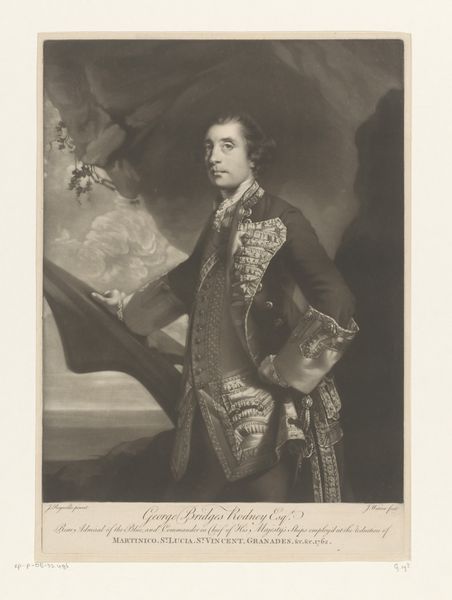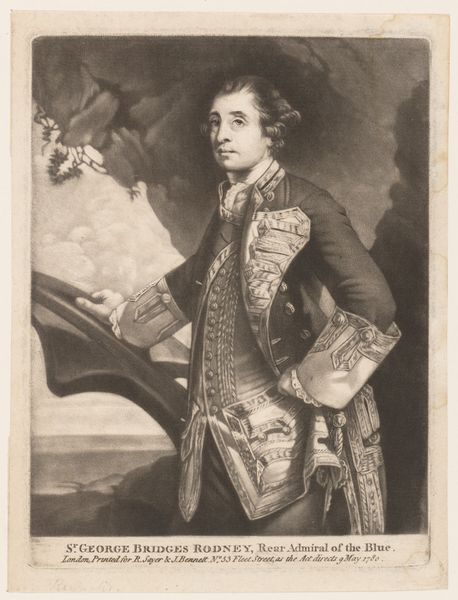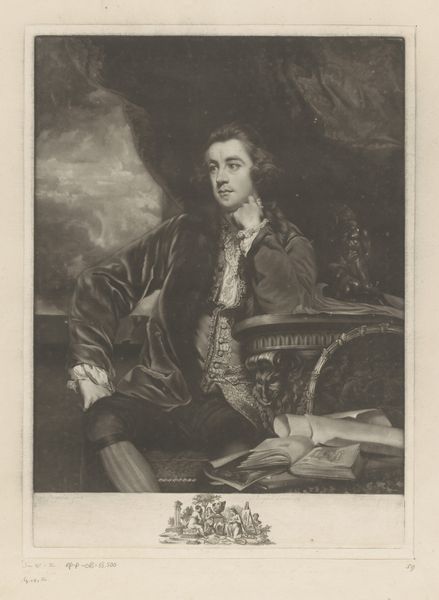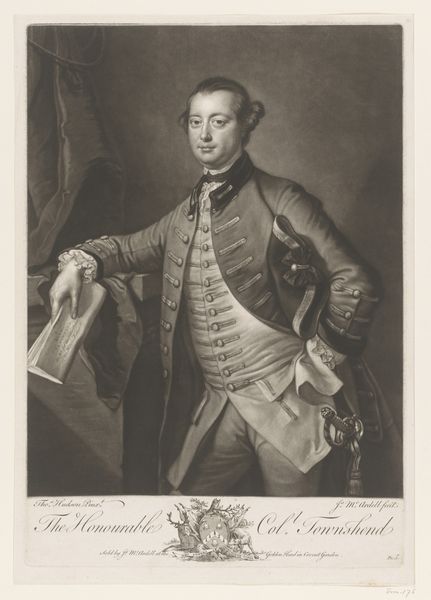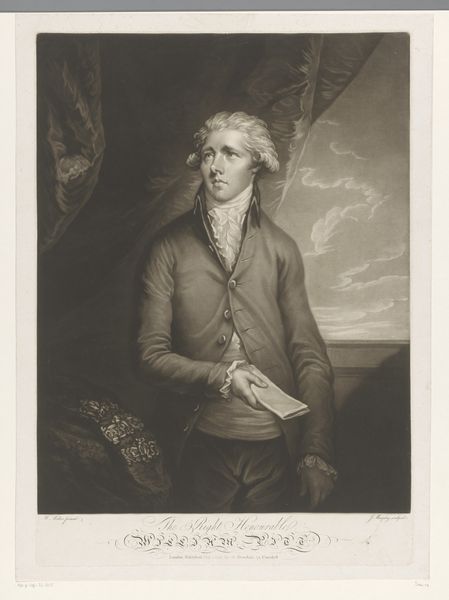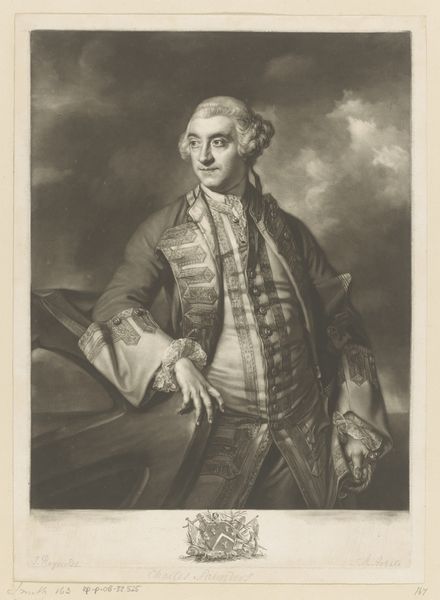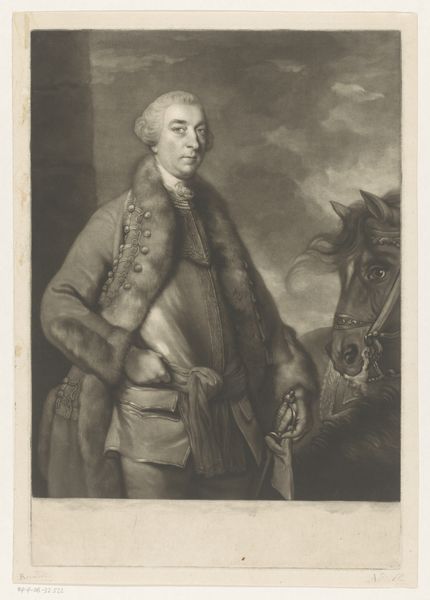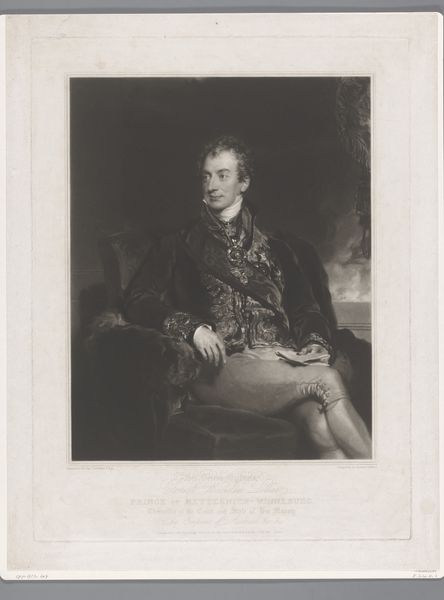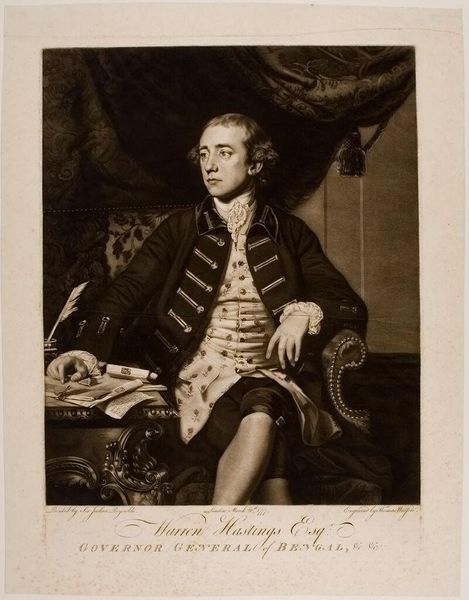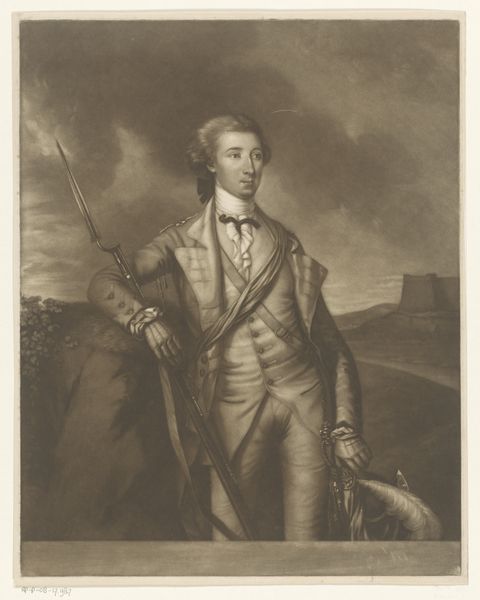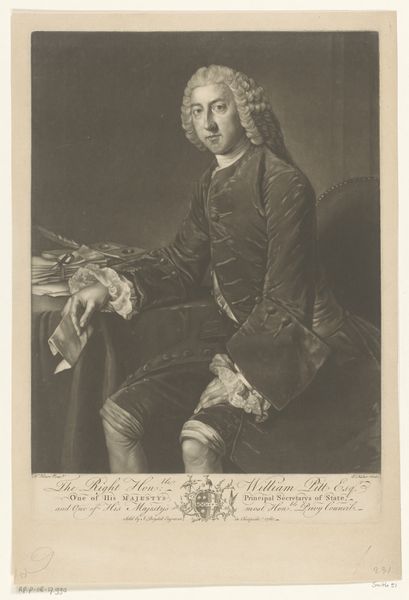
drawing, engraving
#
portrait
#
drawing
#
neoclacissism
#
historical photography
#
history-painting
#
academic-art
#
engraving
Dimensions: height 454 mm, width 327 mm
Copyright: Rijks Museum: Open Domain
Curator: There’s a stillness in this work that really strikes me. Almost a silent confidence radiating from the subject. Editor: Right, well, here we have William Dickinson's engraving, likely made between 1780 and 1785, depicting Sir George Brydges Rodney, Admiral of the White. Look at the lines. They speak of precision, technique, of meticulous labor. Curator: Dickinson really captures that moment, that feeling of… well, you see his hand resting on what looks like a ship's mast. The ocean swirling in the background… it's all terribly romantic! Do you not feel that little shiver of excitement when looking at it? Editor: It’s fascinating how this was made! Think about the economics here, the commerce: a print of an admiral intended for distribution. This piece served to make the Admiral’s image reproducible for, presumably, a broad consumption by his admirers. The industrial aspect to that is just astounding. Curator: But think about *why* people wanted his image. It's more than mere commerce. There’s something enduring in this idealized figure. Neoclassical art seeks that, the perfect balance, an almost untouchable heroic posture. The *essence* of admiral-ness. Editor: Perhaps. And while you get swept up in the artistic merit, consider the physical production! Copperplate engraving is painstaking. The skills, the hours! The value, even then, existed in the process of *making*, even as that “made thing” was infinitely replicable. Curator: True! You do begin to admire the process with a portrait like this. But seeing those eyes, the carefully rendered details, I see something of myself mirrored there, my own ambitions, perhaps. He’s so much more than lines on copper. Editor: Agreed, actually. Though the system of its manufacture interests me more, this isn't just a piece about craft. It has an artistic soul about the figure itself! This sort of printing democratized imagery. Curator: I will admit, I appreciate gaining some insight into the democratization that the material gave society at the time it was produced.
Comments
No comments
Be the first to comment and join the conversation on the ultimate creative platform.
